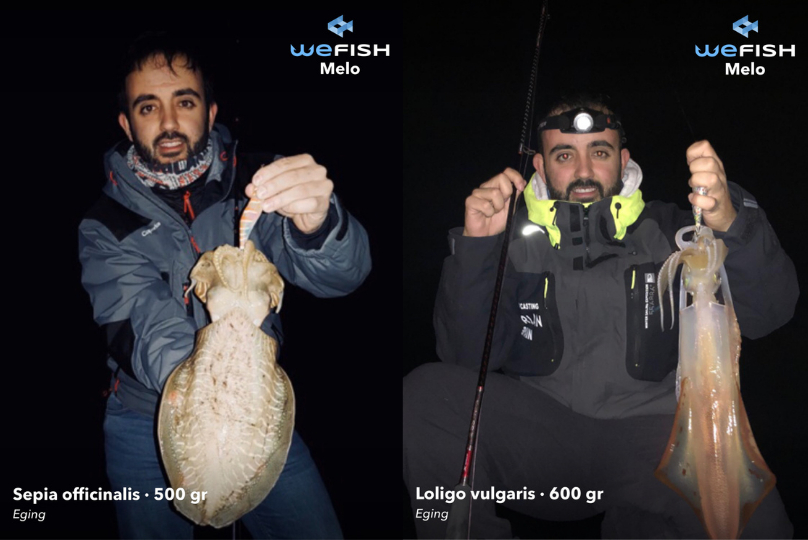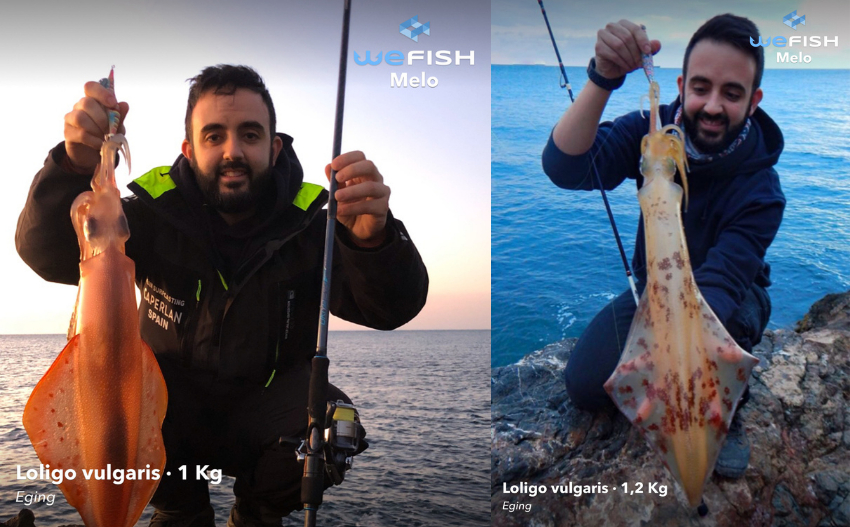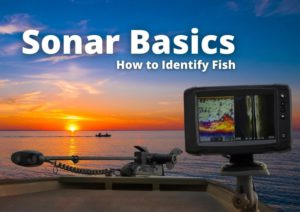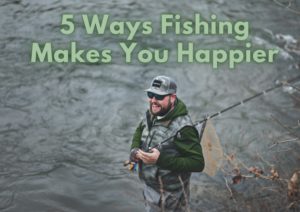We are at a perfect time of year for squid, octopus and cuttlefish fishing. The best modality for catching cephalopods is eging fishing. It’s a very simple type of fishing. This style of fishing of Japanese origin has spread throughout the world thanks to its efficiency and ease.
Eging fishing is so popular, in the first place, because it’s for catching species that you can find in much of the planet, which is why it’s a very widespread practice in most countries of the world. Second, it is a very fun modality, which we can practice on the coast or from a boat. It’s also simple to perform, so you don’t need to be an expert in squid fishing or a specialist in fishing for octopus to be successful in your fishing day.
To know all the details about Eging fishing, we talk with one of the references of this modality within the WeFish community, Carmelo Sánchez, better known by our users as Melo.

1. We meet Melo
Hello, my name is Carmelo Sánchez and I am from Murcia. I’ve been fishing for as long as I can remember and I consider fishing as a way of life. Although my main modality is surfcasting, I have been eging fishing from coast for 9 years and I consider it a more than attractive modality, it hooks a lot!
Speaking a bit about eging, I have to admit that this is a modality that is having a tremendous boom and about which previously there was not much information in the Mediterranean area, although it’s true that in the North squid fishing is very traditional and I have learned a lot from them.
2. How is the Eging fishing technique performed?
To perform this technique we only need rod, reel and egi (lure). It may seem easy but it’s not, since it is difficult to learn about this fishing modality when you cannot practice it all year round. This technique is based on casting and picking up the lure or egi, which we will have to let deepen until we believe that it has hit bottom. Once the lure is at the bottom, we will move it by pulling with the rod, trying to imitate a wounded fish or a shrimp fleeing a predator.
3. What is the best time for Eging fishing?
In Mediterranean waters, the best time for this type of fishing is between the coldest months of the year, since it is when squid, cuttlefish and octopus come closer to the coast. Although it is true that we can catch them throughout the year, it will be in the months of September to March when they are most active. Also in these months will be when the specimens that we can catch are larger, since they reach the coast to complete the reproductive cycle.

4. From where can you practice Eging fishing? What is the best place?
This type of fishing can be practiced from all fishing spots. We can find cuttlefish, octopus and squids from the shore of the beach to all the stones of the port or cliff. As long as we are on the ideal date for them, it’s easy they move through all these places. If I had to choose a place that I think would be ideal for this fishing would be the areas with a depth between 3 and 8 meters in which the bottom is mixed with some rocks, sand and especially posidonia algae since that is where they mostly hide.
5. Which is the best material for Eging fishing? (Rods, Reels, Threads, Lures…)
This topic is too personal since each person will prefer a different equipment according to their physical complexion, their level as angler and even their way of fishing. I am currently fishing with a Caperlan rod model for eging that came on the market in early 2020 and it’s the Ukiyo 900, in measurement 2.70. This eging rod model is the first I have with this measurement of 2.70 meters but I have to say that I’ve adapted very well to it. I would highlight its lightness and how well it behaves both with smaller lures and with those of sizes 3.5 and up to 4.0.
I can also use this rod in fishing spots where the height of the water is higher or where I need to avoid the first rocks in front when picking up my lure. I have been using it since the beginning of the season and it has an ultra-sensitive point that detects the slightest touch of the lure with a squid.
As for the line, I always use braided thread in measures of 0.08 and 0.10 millimeters. As you know, the main quality of braiding is that it has no elasticity and is very resistant, so it allows us to use the diameters that we have said previously to cast the lure as far as possible and have enough sensitivity.
In reference to the egis that I usually use, they are between sizes 2.0 and 4.0 and weights between 12 and 25 grams approximately. The colors of these lures are very varied and, as it says, variety is the spice of life. There is no single lure for all fishing days so we will have to make an investment in filling the box with lures of different models, weights and colors.
6. What has been your best catch using this modality?
Although each catch is different and they all have a beautiful memory, perhaps I choose those great specimens, the ones we are all looking for. I remember a beautiful squid on a day when the activity was nil, it seemed like a desert when between chatting and chatting with my partner Lucas, he told me “put that lure that worked so well 3 years ago, the red one for €2” . My face was astonished since it was a lure that I had forgotten at the bottom of the box, so used, rusty and that I would never have choose at that moment. Well, I put it, cast it and it had not been in the water for 30 seconds when a good-sized squid get caught on the lure, giving us a beautiful fight and the consequent laughs as a result of the catch with that lure.

7. What is the best advice for someone Eging fishing for the first time?
Watch, learn and NEVER give up! It’s clear that in fishing you never have to throw in the towel but, when we start in a new modality, we always have doubts as to whether we will be doing the movements well, if the lure is adequate or whether or not the squid will be in this new fishing spot.
8. How are the movements of the Egis to catch squids?
To catch squid we have to give the egi an attractive movement, so that the squid attack it. For this aim we can differentiate into 2 or 3 types of movements:
- Movement in jerks: this is based on dropping the lure to the bottom and every 15 or 20 seconds give 3-4 energetic jerks of the rod upwards. This causes the lure to make a “sawtooth” movement. These movements usually work when squid are very active and hunt at middle high of the water.
- Linear pickup: Once the egi touches the water, we count a few seconds for it to descend to half the depth and we start a linear pickup, very slow and with some touch of the point. This is done with the tip of the rod down and very slowly. Very effective when squid are suspicious and very quite on the bottom.
- Mixing of jerks and linear pickup.
Conclusion
Without further ado, I hope you like this humble fisherman’s post. For who each catch and each fishing moment tastes special and that is why it’s still worthwhile to continue fishing.
LOTS OF INK FOR EVERYONE!

If you want more information about other fishing modalities visit our post: The 5 most popular fishing modalities. Enter WeFish to upload all the new catches you get with this Eging fishing guide or to see incredible catches of octopus, squid, cuttlefish…













